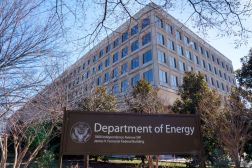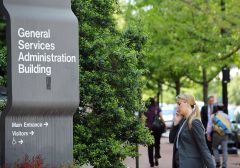There is a technology deficit in the federal workforce, and it’s the government’s fault.
The problem, according to panelists at an event hosted by the New America Foundation on Tuesday, stems from the negative impressions of what a technology job in government entails.
Low pay, the absence of a real community, and the lack of clear evidence of progress are all factors that discourage people from applying for government jobs, according to panelist Ashkan Soltani, an independent researcher and technology consultant.
GSA Administrator Dan Tangherlini acknowledged the government faces real challenges when it comes to attracting technologists. You have to convince these individuals they will be a part of the process and that working in government technology doesn’t mean working in the basement or in the boiler rooms, he explained.
“In most organizations, technology is operations, and operations is risk,” Tangherlini said. “You go there if you have to, but you know there are dragons. When you open that door, you don’t always know what’s on the other side of it.”
It also has a lot to do with providing employees incentives.
Having an incentive structure is key, said Tom Kalil, deputy director for policy of the White House Office of Science and Technology Policy. When things go wrong in government, inspectors general and the Government Accountability Office get involved, and then it’s congressional hearings and media coverage, according to Kalil.
“What we need to do is actively encourage responsible risk taking, and promote and celebrate innovation,” Kalil said.
But that can be difficult when federal agencies must answer to members of Congress who are not technologically literate themselves. There aren’t members of Congress on the House floor talking about these technological issues, and addressing them, Soltani pointed out; there is a fear of not saying the right thing, and being “that guy,” he said.
“We need people at the policy table who are already unafraid,” said Susan Crawford, professor at the Benjamin N. Cardozo School of law and visiting professor at Harvard Law School.
That fear — of public failure and being criticized by a Congress that doesn’t understand technology — can discourage many professionals who might be considering going into government, she said. It’s important, therefore, to identify people who are highly skilled technologists in government and raise them up, Crawford said.
However, not hiring and developing a technology-savvy federal workforce is no longer an option. Because of technology, people expect government services delivered in the same time and manner as other services they’re receiving, Tangherlini said.
“It’s very clear and very obvious that by using smart technology, we can improve the way we deliver services,” Tangherlini said.
Tangherlini pointed to one of GSA’s latest innovation efforts—18F—as an example of how it’s possible to introduce new ways of thinking in government. The mission of 18F at GSA is to be a start-up in government, a place to incubate ideas, work on projects and serve as a resource both internally at GSA, as well as for other agencies.
And there have been other programs in government that also exemplify the benefits of bringing in people from outside of government to contribute new ideas. The Presidential Innovation Fellows program, which started with U.S. Chief Technology Officer Todd Park at the Office of Science and Technology Policy at the White House, and is now housed at GSA, has had a lot of success.





